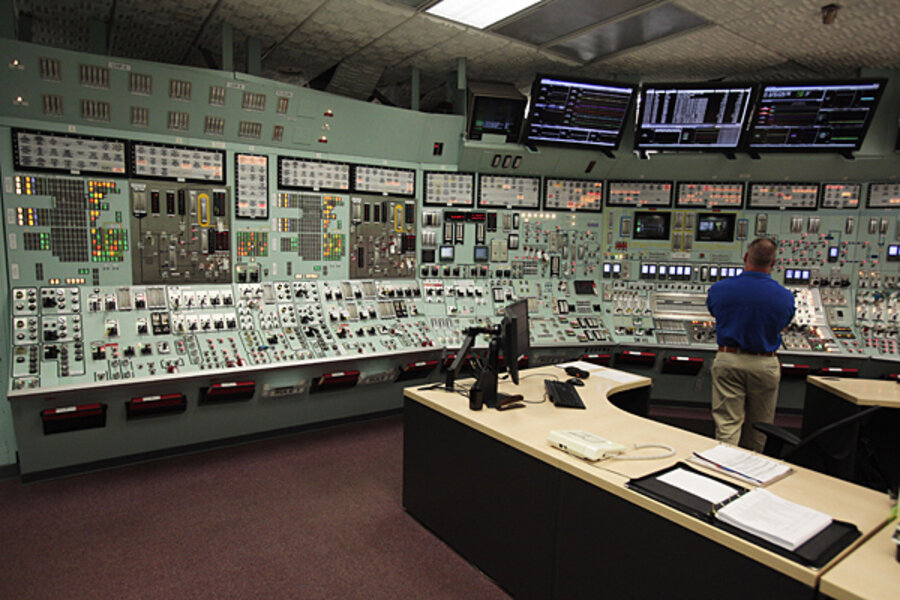Who will clean up after the nuclear plants?
Loading...
Many of the civilian nuclear power plants built in the US. and Western Europe during the halcyon days of the Eisenhower administration are coming to the end of their operational lives as their operating licenses expire.
The looming deadlines leave their operators with two stark choices – apply for a license extension beyond the original forty years, or decommission.
A bad choice, however you look at it. For a license extension, aging NPPs must upgrade, while decommissioning raises the primordial question sidestepped since the dawn of the civilian nuclear age – what to do with the radioactive debris? (Related article: Why is Iran Going Nuclear?)
The British imbroglio.
The predicted cost of decommissioning Sellafield nuclear facility in Cumbria, Britain’s largest nuclear complex, is now estimated at an eye-watering $104.3 billion over the next three decades, a figure that inexorably year by year continues to rise and represents over $1,546 for every man, woman and child in the British Isles.
Sellafield is a nuclear reprocessing site, close to the village of Seascale on the British coast of the Irish Sea in Cumbria, England, a subsidiary of the original nuclear reactor site at Windscale, which, along with neighboring Calder Hall, is undergoing decommissioning and dismantling of its four nuclear power generating reactors.
Now, the aging facility, one of the first established under the Eisenhower’s administration’s civilian “atoms for peace” program, is due for decommissioning.
So, where to store the nuclear waste?
The decision follows in the wake of a 30 January meeting of three local authorities which have yet to decide whether to agree to further investigation of the possibilities of an underground store in their districts. After local authorities in Kent passed on the proejct, Cumbria county, Allerdale and Copeland are the British councils still expressing interest in the possibility of hosting a nuclear dump site. Sellafield remains a massive local employer, with over 9,000 people directly employed there. (Related article: Iran to Install Thousands of New Centrifuges for Nuclear Enrichment)
Poisoning the regional picture, in April 2010, the company managing Sellafield sent four bags of radioactive waste from its plant to Lillyhall landfill, instead of the low-level repository at Drigg. All of the bags, which contained low-level radioactive waste, including gloves, mops and rubber, were retrieved and returned to Sellafield for correct disposal. Complicating the picture, seven charges were subsequently brought by Britain’s Environment Agency and the Office for Nuclear Regulation following an investigation into “multiple failures” involving the incorrect disposal of low-level radioactive waste. While Sellafield admitted the charges, Sellafield spokesman Eleanor Sanderson disputed the charge that the error was out of complacency and negligence and insisted that staff work “tirelessly” to maintain safety on site. Dr. Rob Allott, EA nuclear regulator team leader, maintained, “It’s highly likely that some groups of people would have been exposed to radioactivity. The waste is inherently hazardous, but with a low risk factor.”
Addressing the case over the pollution, heard at West Cumbria Courthouse last week, Barry Berlin, for the Health Safety Executive and EA, said an error was caused by a new monitor which had passed the bags as “general” waste, exempting them from strict disposal controls an error that was only uncovered when a training exercise was carried out at Sellafield. Seeking to ameliorate the implications of the sloppy bookkeeping Berlin told the court, “There is no doubt that these are welcomed changes. But because we are dealing with radioactivity we submit these should have checked beforehand.”
What remains unsaid that the court case is where the more than $104 billion to decommission
Sellafield will come from, much less where the nuclear debris will reside after the facility is offline. The British electorate deserves answers to the questions.
Across the Pond, Florida’s Progress Energy’s Crystal River 3 Nuclear Power Plant is also in the process of being decommissioned. Not only for consumers but those living nearby, the decisions regarding Sellafield’s decommissioning are likely to reverberate across the Atlantic.
Original source: http://oilprice.com/Alternative-Energy/Nuclear-Power/Who-will-Pay-for-Nuclear-Power-Plant-Cleanup.html







